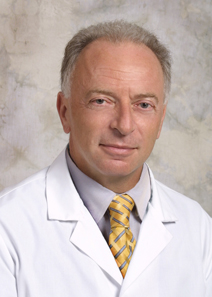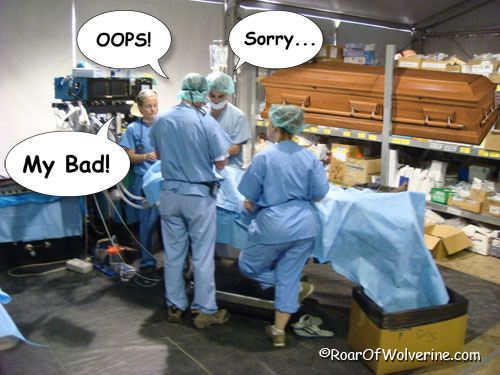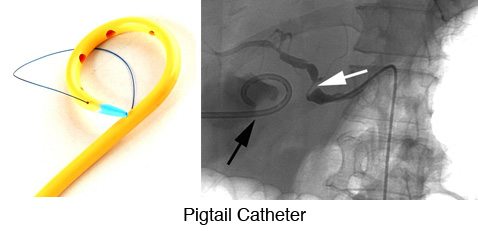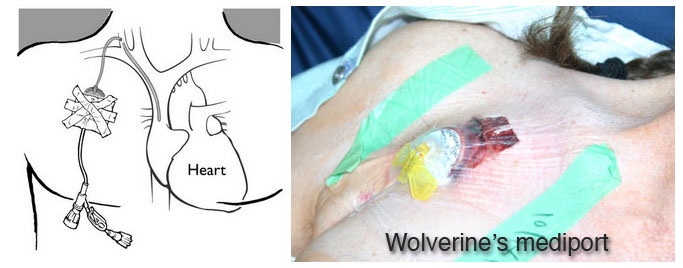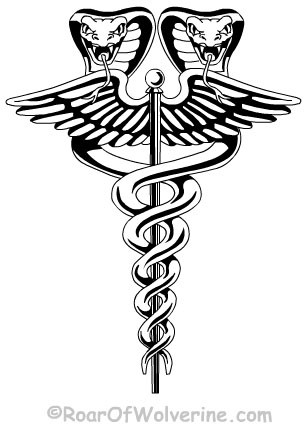Is Your Surgeon Licensed? Are You Sure?
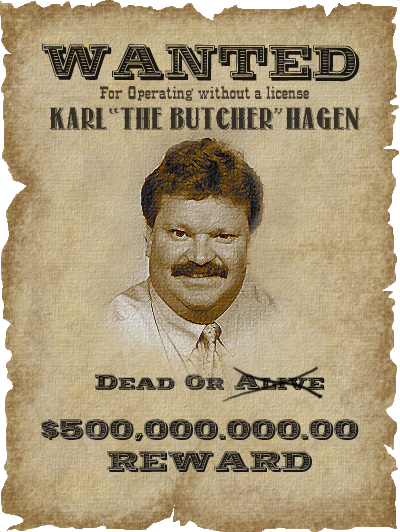 The mug seen in the poster is the surgeon that nearly cost me my life, Karl Hagen. This rant is not intended as simply a personal attack on a single surgeon, but I am using his story as an example of a very real problem that could affect you or your family. Until recently, I was not aware that a doctor or surgeon who has had their license revoked in one state can move their practice to another state and legally begin a new practice. The biggest mystery to me is why any state medical board would want to license a doctor that another state has deemed unfit to practice medicine. This is what the state of Florida granted to Karl Hagen – and this is not an isolated or rare case. I was shocked to discover that this is a quite common occurrence and it is not unique to Florida.
The mug seen in the poster is the surgeon that nearly cost me my life, Karl Hagen. This rant is not intended as simply a personal attack on a single surgeon, but I am using his story as an example of a very real problem that could affect you or your family. Until recently, I was not aware that a doctor or surgeon who has had their license revoked in one state can move their practice to another state and legally begin a new practice. The biggest mystery to me is why any state medical board would want to license a doctor that another state has deemed unfit to practice medicine. This is what the state of Florida granted to Karl Hagen – and this is not an isolated or rare case. I was shocked to discover that this is a quite common occurrence and it is not unique to Florida.
At first glance, this may not seem like as frightening of a prospect as it actually is, because any responsible person will do extensive research on their doctors and surgeons before submitting themselves for treatment. Prior offenses and reprimands on medical professionals are of public record and easily searchable through websites like HealthGrades.com. Most of us are not going to consider the fact that we may require emergency medical treatment at some point in our life and not be afforded the luxury of time necessary to research or seek recommendations for our doctors. Not all surgeries or treatments are scheduled.
I was admitted to South Lake Hospital for a simple blood transfusion and never thought that I may require surgery. I would have never went to a rural hospital for surgery. By the time I was taken in for surgery, I had been unconscious for more than 48 hours. Many patients are rushed into emergency rooms everyday needing immediate treatment. We all would hope that if we we’re in need of emergency medical treatment or surgery, that the nearest hospital we were taken to would not have doctors on call that have had their licenses revoked in other states. After all, ER doctors and surgeons are the one doctor that the patient will not have the opportunity to conduct a background check on before ending up under their knives.
In an emergency situation, you could find your life in the hands of a doctor that was determined to be unqualified to practice medicine in another state, as was the case with Karl Hagen. To make matters worse, not only do hospitals hire these doctors, but they are not required to inform the patient, nor their family of the fact that an unlicensed doctor is about to begin invasive procedures on their loved ones. Karl Hagen’s dismal record as a surgeon is of public record and can be verified here. In addition to several blunders, some of which cost the patients their life, he also had his license to practice medicine in California revoked on July 29, 2009. He operated on me on September 20, 2009, just two months later. At the time he was about to operate on me, my wife did a quick research of his credentials, but at that time all the information listed for Karl Hagen was reported as “pending”. The record that exists now on-line, including the revocation of his license, did not appear until over a year later. South Lake Hospital certainly knew of his problems, because his case had been decided and the Florida State reprimand and California revocation of his license had all transpired months before he operated on me.
I am not sure whether Hagen ever practiced in California. His online profiles always list both states, Florida and California as where he is licensed to practice. HealthGrades.com still lists him as being licensed in California and Florida here – even though he is no longer licensed in that state. His license in California was revoked in 2009, but as far as I can tell, it was based on reprimands he received while practicing in Florida. He has a long history of medical reprimands and did settle for $300,000.00 in a case which cost the patient their life. This seems a rather low amount of compensation for the loss of one’s life, but seems common in the world of malpractice law. If a pharmaceutical company injures or kills a person, the financial damages can be staggering – usually in the millions, but as I have mentioned many times before, doctors are awarded special protection under the law that no other professional enjoys.
In the first account brought against Doctor (and I use that term loosely, because California no longer considers him a doctor) Karl Hagen in 2006, he failed to examine the x-ray for a woman who was scheduled to have a chest tube placed. The excuse given for this blunder reads like a gag from a bad sitcom. According to the public record, a doctor told the nurse to schedule the operation for a chest tube to be place. The nurse asked the doctor if it was to be placed on the left side and the doctor replied “right”, indicating that it was to be placed on the right side. The nurse assumed the doctor was saying “right” in agreement with her and therefore prepped the left side for the surgery. The detailed legal account of this case can be found here and included a $5,000.00 fine – considerably less than the payment he received for the service, I’m sure.
Yes, it was an error in communication between the doctor and nurse – sort of an Abbott and Costello type deal – and might be a riot in a comedy routine, but is not very amusing when a patient’s life is in jeopardy. Karl Hagen was reprimanded and punished by the state of Florida because he failed to check the x-ray himself. But, even less excusable was the fact that the patient already had several chest tubes placed on the right side that had been ineffective.
So Karl Hagen is presented a patient who has several scars on her right side from prior chest tubes and still decides to place the new one on the left – you would think that the scars on the right side would have been a signal for him to examine the x-rays. The patient did eventually die, but I’m not sure whether his error contributed to her death or not. The punishment for this critical error was “education” – sort of like those courses you have to take after getting a traffic ticket. That’ll teach him a lesson! Do you feel more comfortable letting this guy open you up now, knowing he took those courses? At this point, California still considered him licensed in their state and he continued to practice in Florida.
His worst sanction came from another deadly mistake and was very similar to the error he made on me. He operated on a man who suffered from diverticulitis, which is a bulging pocket in the colon that becomes impacted and infected. He was to resect that portion of the colon, which is the proper procedure for diverticulitis, and to then form a stoma for a colostomy – again, all typical treatment for this illness. Hagen obviously has a bad habit of not thoroughly checking the viability of the tissue when resecting bowels. He failed to send the material to pathology and instead discarded it. This caused a 17 hour delay in surgery when the necrotic tissue he left inside the patient caused a systemic infection which ultimately led to the death of the patient. The detailed legal account of this malpractice can be found here.
When I read that report, it was like deja vu and sent chills down my spine. Hagen had repeated this error while operating on me. We had to obtain all of the medical records to provide to the transplant surgeons in Miami in order to qualify for an intestinal transplant. Going over Karl Hagen’s surgical notes, he records that the section of jejunum, that he was forming into the stoma, appeared to be compromised and yet he used it and never sent a sample of the tissue to pathology to see if it was viable. To make matters worse, he even wrote in his surgical notes that the compromised tissue could result in a high morbidity and mortality (notes that he thought I would never see).
Over the next five days, the stoma continued to darken in a manner referred to by doctors as a “dusky” appearance. The Attending Doctors were concerned about this and continued to consult with Hagen, but he refused to take the time to examine it. He also insisted it was fine and would begin to turn pink as blood began circulating to it. On the contrary, it continued to darken each day and became less and less active. The doctors of South Lake Hospital played a dangerous waiting game and refused to send me for an MRI, because the hospital’s only MRI machine was located in small building across the parking lot and it would be very difficult to transport me with all of the IV pumps I was attached to.
I was literally dying from the three feet of necrotic bowels left inside of me and these doctors did not want to make the extra effort to move me to the equipment necessary, because for some strange reason they had it housed in a building over fifty yards from the hospital. By the time they decided that my condition was becoming too critical to ignore any further (four days) they did transport me to the machine.
Luckily for me, the MRI revealed what appeared to be a partial occlusion of the mesenteric artery (the artery that supplies blood to the intestines). Why do I say lucky? Because this hospital was not equipped for vascular surgery, so the decision had to finally be made to transfer me to a better equipped hospital. Even at this point, Karl Hagen was still maintaining that the stoma was fine and continued to ignore the problem. Hagen was quite clear about his position to my family. He personally felt that I would have such a horrible quality of life if I lost that last three feet of intestines that I may be better off dead. He had obviously decided to himself to spare me the suffering and just let me die if the stoma did not come back to life on its own. This is not his decision to make. All of the other attending doctors were in agreement with Hagen, because they didn’t know that intestinal transplants were possible. I really believe they transported me to the other hospital so I would die there, rather than at their hospital.
I arrived at the trauma hospital in Orlando, where I was prepped for the vascular procedure. The vascular surgeon hoped that after the clot removal that the stoma would begin to brighten up, once the blood flow was improved. He removed the occlusion and watched me closely over the next couple of hours really expecting the stoma to come back to life. By this time the stoma was nearly black in color. They left me alone for a couple of hours and I was in the room alone. It was during that time when I began to have seizures. There is a bit of missing time during the seizure, because the last thing I remember was a large oxygen mask being pulled off of my face and the room was suddenly filled with doctors, including the vascular surgeon.
At this point the vascular surgeon immediately called Karl Hagen to have him come over and examine the stoma and consult them on what actions needed to be taken. Hagen felt no need to make the twenty-minute trip to Orlando. He determined over the phone that the seizures were unrelated to the black stoma and that they needed to just wait another day or so for the blood to get to the stoma and I would be fine. It is certain that Karl Hagen was going to play the waiting game until I died, had I remained at that hospital. You would think that after all the patients he had lost in the past by leaving necrotic tissue inside, he would not continue to make the same dumb-ass mistake – but he’s obviously quite a dumb-ass and doesn’t learn from his past mistakes.
My wife asked the vascular surgeon to take action and he said something about me being Hagen’s patient and it would be wrong protocol for him to intervene. He must have used the word, territory, because the last thing I can clearly remember was my wife loudly proclaiming to the vascular surgeon that; “He isn’t anyone’s territory, he’s my husband!”. Then she added; “Can you just sit here and watch him die?”. He contacted the trauma surgeon who was on-call and assisted him in the an emergency surgery, because I was in septic shock by that time.
Several weeks later I had to visit the trauma surgeon so he could examine the incision. He actually told us that they had considered just closing me up and keeping me sedated until I died in the next couple of hours. It was the vascular surgeon that convinced him to go on with the long hard operation. It took hours for them to irrigate and suction out all of the necrotic tissue that had turned to liquid and spread throughout my abdomen. The vascular surgeon told us that it was only because of my age that they committed to the effort.
Because of just how critical the situation became, I know that had I not been transferred to the Orlando hospital my fate would have been death, because Karl Hagen would never had made the effort. This was the only difference between me and the other patient who had died several months earlier under Hagen’s care. Karl Hagen is still practicing medicine somewhere and I have no idea how many people he will have to kill before he loses his license to operate for good?
It was the incident with that other gentleman that ultimately caused Hagen to lose his license to practice in California. The lawsuit, reprimand and revocation of his license had all transpired prior to my operation. In other words, South Lake Hospital allowed a surgeon who had lost his license to practice in California to continue to practice and perform serious operations in their hospital. I have stated his name many times in this article so that it may be found on any searches being done by any patient who may be under his care or considering him for a surgery. I did not realize that this problem existed and I wonder how many people know this is possible. I have since done research on this subject and have found that it is quite a large problem in this country. If you were unaware of this problem (as I was) and believe it may only be a Florida problem, here are some articles on how common this occurs:
New York Times: SOME ERRANT DOCTORS GET NEW U.S. FUNDS BY CHANGING STATES
WPTV.com: DOCTORS LOSE LICENSE BUT STILL TREATING PATIENTS
FSBCT: A FAILURE TO PROTECT THE PUBLIC
It seemed that there were a multitude of cases of doctors who had lost their license to practice in the state of New York that move their practice to Connecticut and continued treating patients. I really cannot understand the logic used by any state medical board to grant a license to doctors who had their license revoked to practice medicine in another state. If you have that many deadly mistakes in your career, maybe it’s time to seek a new one.
I cannot expect the federal government to forbid states to license doctors based on the decision of another state to revoke their license, but it would seem reasonable to demand that hospitals that allow a doctor to practice must have to make that information known to potential patients and be liable for any damage that doctor commits. If a pack of cigarettes have to have warning information as to the danger they possess, then similar information should have to be provided for a dangerous doctor. There are hundreds of patients rushed into emergency surgery everyday – many are unconscious and in critical condition. How is it their responsibility to research the doctor or surgeon on-call at the hospital they are rushed to? Is it too much to ask that hospitals not permit doctors with so many discipline problems administer to emergency or trauma cases? Maybe they could be restricted to private practice or clinics where the patients are of sound mind and not in a rush for treatment.
At the point it was determined that I required surgery, my family wanted me transferred to a better equipped hospital in Orlando, but the doctors actually refused, even though they had a helicopter pad and are part of the Orlando Health system who pays to equip them with emergency transport equipment for just such occasions. Time was not the motivating factor, because their on-call surgeon, Karl Hagen, was not available and they told my family that he had 24 hours to respond to the emergency page. I would have actually gotten faster treatment had they shipped me to ORMC, where trauma surgeons are on-call 24-7. The refusal to transport me was solely based on greed and pride. Most doctors are far too arrogant to admit when a case is beyond their training and experience.
Most recently, we were told by an employee of South Lake Hospital, that Karl Hagen had been banned from practicing there further. Though I cannot verify her reason for his dismissal, the employee told us that it had something do with an alcohol abuse problem. Why in the hell would South Lake Hospital allow such a surgeon to work out of their hospital? When you allow a doctor, who a major state like California decided was unfit to practice medicine, did you really believe he would achieve great things for your hospital? So this hospital allowed this surgeon to perform such a risky surgery on me knowing his past malpractice record, the loss of his license to practice in California and that he had a drinking problem. The most frightening part of this is that even though he has been removed from South Lake Hospital, he is still license to practice medicine in the state of Florida – if he loses his license in Florida anytime soon, he may move to another state and be practicing in a hospital near you.
If you think he is a unique case, you’d be wrong. Do a little research and it won’t take long to see that this is happening all over the U.S.. We wonder why the U.S. is ranked 37th in health care. There are very talented people who become doctors and then there are people who were just not intended to be doctors, but become one anyway. It’s kind of like those wannabe singers that turn up for auditions for American Idol and holler like a wounded moose – it makes you wonder what ever made them believe they were going to be the next singing sensation. Maybe we need a Simon Cowell in the medical auditions. Someone with the stones to tell an untalented doctor to get out of the business.
Some medical apologist posting as ‘Kathleen” left a comment over at Paleohacks.com in response to a link that someone had provided to my article “How Common Are Medical Errors”. Her brilliant rebuttal was to point out that all of the mistakes made on me were simply because I was in Florida. How much do you want to bet she works in the medical profession? This is the exact “stick-your-head-in-the-sand” mentality that allows this type of thing to perpetuate. Medical errors are the 3rd highest killer in the United States and this ignoramus wants us to believe that all of them happen only in Florida.
So if all the statistics concerning medical errors from Florida were removed, then the U.S. would magically leap to number one on the world stage. Can someone really be so mentally blind? I gave the national statistics in that article, yet her wishful thinking says “Yeah, but it’s much better where I live”. No it’s not! As a matter of fact, it could be much worse. I’m sure that Florida has a very high hospital mortality rate compared to most states because they have more seniors as its populace. After all, Florida is the place most people go to die. Getting rid of Florida or avoiding treatment in Florida is not going to fix the problem, as this medical shill suggested. It’s just another excuse to look the other way and why nothing is being done to fix the problem – because they refuse to see a problem.
Doctors losing their license in one state and moving to another to practice is actually becoming quite a common problem in the U.S. medical system and I believe that few people are aware of it. It would seem to me that a license to practice medicine is a privilege, not a right. Just because someone spent all the time and money in education to become a doctor should not mean that they are perpetually granted the right to practice, even after leaving a population of cadavers in their wake.
So many lives could be spared if some of these problems I have pointed out in this series were given more awareness. The three main topics I would like to see made common knowledge are:
Colonoscopies injure and kill more people than they save. (as a matter of fact, your chance of being killed by a colonoscopy are 3 time greater than ever getting colon cancer)
Medical errors are the 3rd largest killer of humans in the U.S.. (you really have to question and research any and all treatments offered by doctors and are best to have a family member or close friend with you as a much as possible if you are hospitalized)
Doctors who lose their license in a U.S. state should not be able to work in emergency rooms or in any other manner where patients do not have the opportunity to do a background check prior to treatment.
The last topic in my series called “Medical Mayhem”, will address a very lethal problem in the medical systems that there is no hope of changing, but I will rant about it anyway. It concerns “The Cynical Attitude Of Doctors Towards Patients”. This attitude is where many of the following problems stem from. Everything bad that happened to me was the result of a cynical approach by a doctor – and almost every doctor and more than half of the nurses had this very same cynical attitude. I hope you will return to read it.
